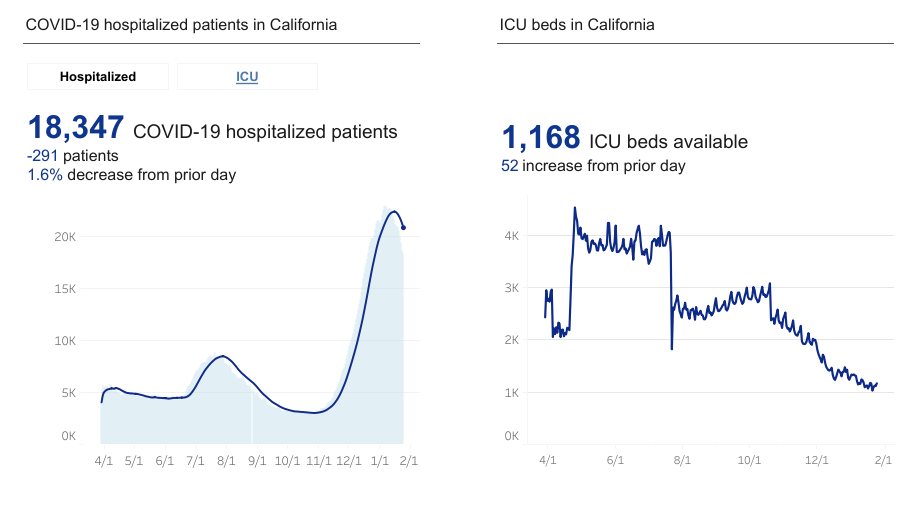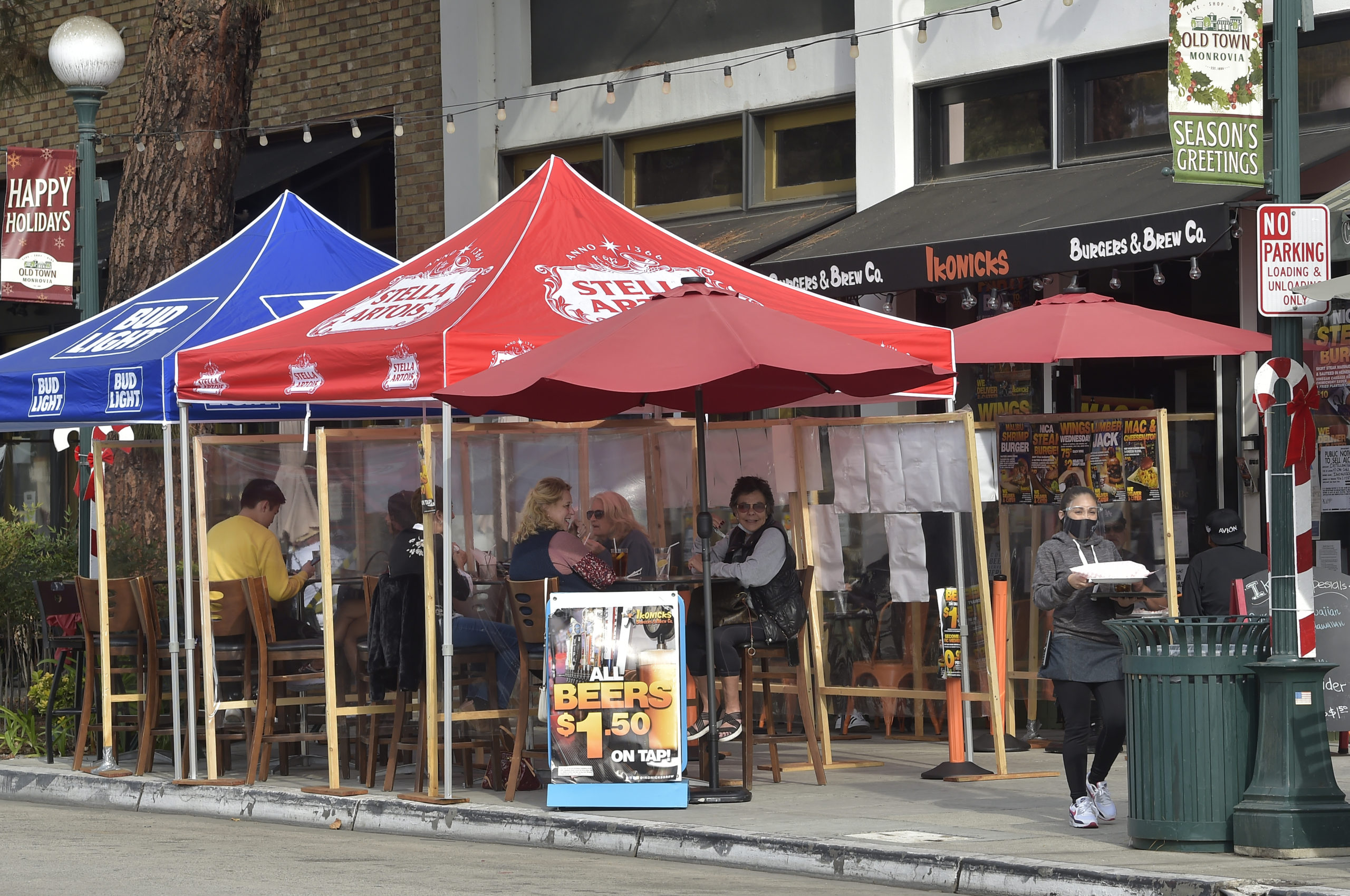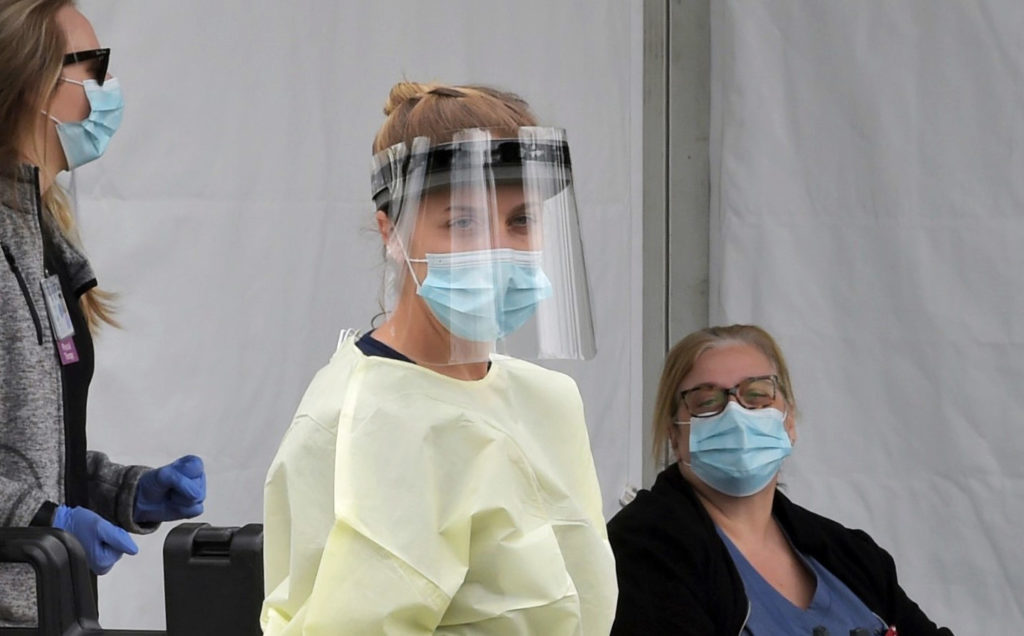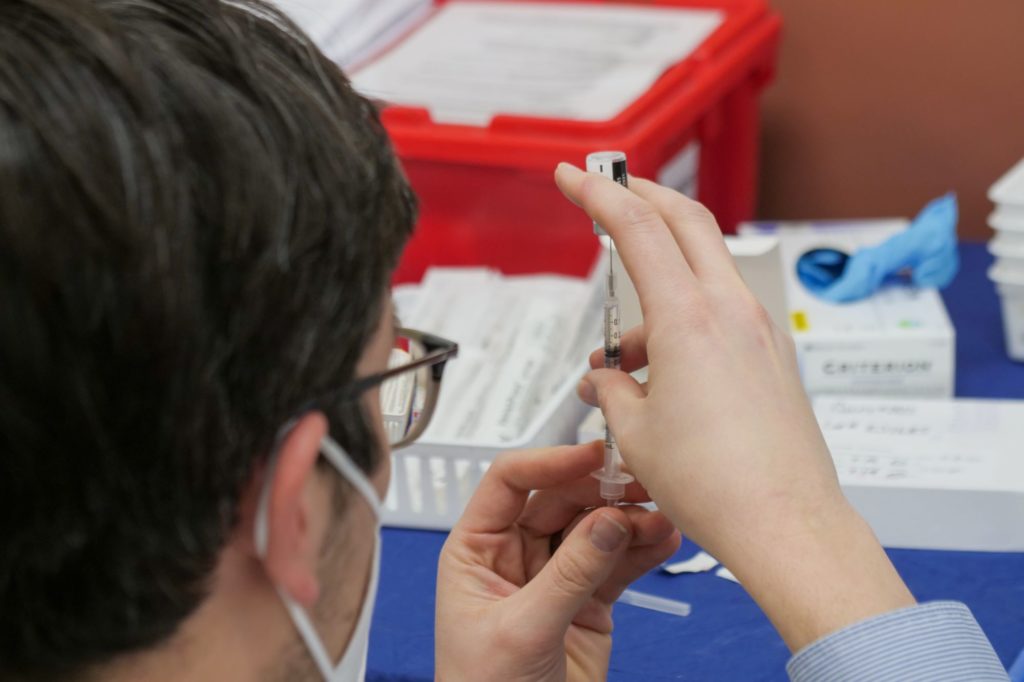
Most counties to return to most strict tier
Officials with the California Department of Public Health (CDPH) ended the regional stay-at-home order on Monday, lifting it for all regions statewide, including the three that had still been under the order — San Joaquin Valley, Bay Area and Southern California. Four-week ICU capacity projections for these three regions are above 15%, the threshold that allows regions to exit the order, the state said. However, Southern California continued to report 0% ICU capacity.
All counties will now return to the color-coded tiers that indicate which activities and businesses are open based on local case rates and test positivity. Tier updates are provided weekly on Tuesdays. Individual counties can choose to impose stricter rules.
Nearly all the counties exiting the regional stay-at-home order are in the Purple or widespread (most restrictive) tier. Services and activities, such as outdoor dining and personal services, may resume immediately with required modifications, subject to any additional restrictions required by local jurisdictions. See the county map to find the status of activities open in each county.
“Together, we changed our activities knowing our short-term sacrifices would lead to longer-term gains,” said Dr. Tomás Aragón, CDPH director and state public health officer. “COVID-19 is still here and still deadly, so our work is not over, but it’s important to recognize our collective actions saved lives and we are turning a critical corner.”
“California is slowly starting to emerge from the most dangerous surge of this pandemic yet, which is the light at the end of the tunnel we’ve been hoping for,” said California Health and Human Services Secretary Dr. Mark Ghaly. “Seven weeks ago, our hospitals and front-line medical workers were stretched to their limits, but Californians heard the urgent message to stay home when possible and our surge after the December holidays did not overwhelm the health care system to the degree we had feared.”
Because case rates remain high across most of the state, the state’s Hospital Surge Order remains in place to prevent hospitals from becoming overwhelmed. The Limited Stay at Home Order, which limits non-essential activities between the hours of 10 p.m. and 5 a.m., expires with the Regional Stay At Home Order ending.
Though cases and hospitalizations from the winter surge are beginning to decline, the state continues to see a record-breaking number of deaths.
Additionally, medical experts continue to express concern over new strains. New data from England suggests that B.1.1.7, the so-called UK strain, may carry a higher risk of death. Patrick Vallance, the British government’s chief scientific adviser, said Friday that “there is evidence that there is an increased risk for those who have the new variant.” Vallance, however, stressed that “the evidence is not yet strong” and more research is still needed.
Earlier this month, the Centers for Disease Control and Prevention warned that modeling data indicates that B.1.1.7 “has the potential to increase the U.S. pandemic trajectory in the coming months,” and that it could become “the predominant variant in March.”
The first case of the variant was confirmed in Los Angeles County last week as CDPH identified a different strain.
The situation in Los Angeles County remains precarious. Though cases and hospitalizations in the county declined last week, the numbers remain extremely high. Just last week, the county had to suspend the monthly limit on cremations due to a backlog of bodies caused by COVID-19 deaths.






